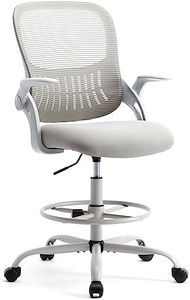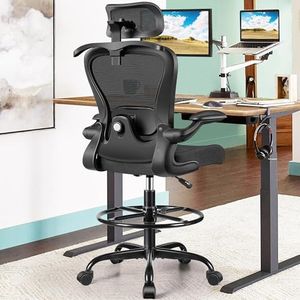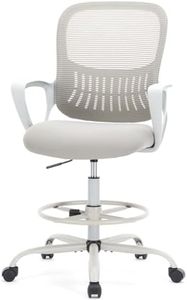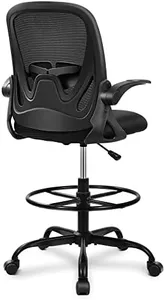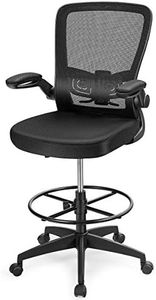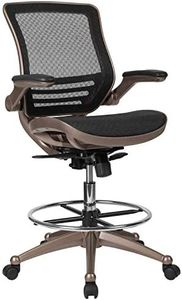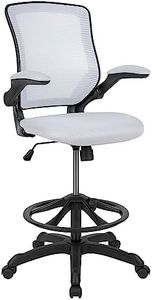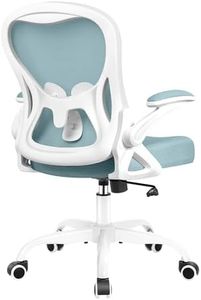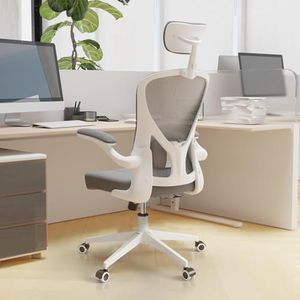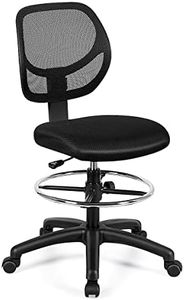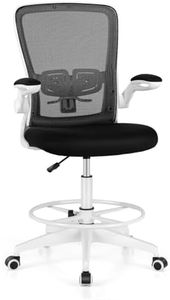We Use CookiesWe use cookies to enhance the security, performance,
functionality and for analytical and promotional activities. By continuing to browse this site you
are agreeing to our privacy policy
10 Best Drafting Chairs
From leading brands and best sellers available on the web.By clicking on a link to a third party's website, log data is shared with that third party.
Buying Guide for the Best Drafting Chairs
Choosing the right drafting chair is important for both comfort and productivity, whether you’re working at a tall desk, drafting table, or in a creative studio. Drafting chairs are designed to be used at higher work surfaces than regular office chairs, so picking one that fits your body and your environment can help prevent discomfort over long periods. Pay attention to how you’ll use the chair, your desired posture, and the length of time you’ll be sitting to select the features that matter most for you.Seat Height AdjustmentSeat height adjustment refers to how high or low you can set the chair’s seat. This is crucial for drafting chairs because work surfaces may be much higher than standard desks. Chairs with a wider height range are versatile and can fit a variety of table heights. If you only use one tall table, you can focus on a chair whose height matches that surface. However, if you switch between workspaces, a broader adjustment range will help you stay comfortable and ergonomically correct wherever you sit.
Foot RingA foot ring is a circular bar around the base of the chair where you can rest your feet. Since drafting chairs are tall, your feet often can’t touch the floor, so the foot ring provides crucial support and comfort. Some foot rings are adjustable so you can raise or lower them to fit your leg length. If you’ll be sitting for long periods, an adjustable foot ring can reduce leg strain and promote better posture.
Back SupportBack support describes the design of the chair’s backrest. Good back support can prevent discomfort and slouching during long sessions. Some drafting chairs include ergonomic shapes or lumbar support to fit the natural curve of your back. If you tend to sit for many hours or have a history of back pain, look for a chair with built-in lumbar support or a contoured backrest. If you only sit for short periods, basic back support may be sufficient.
ArmrestsArmrests give your arms a place to rest while you work. Some drafting chairs have adjustable armrests that can change height or width, while others have fixed or no armrests. Adjustable armrests can make a big difference in comfort, especially if you switch between different types of tasks. If you need freedom of movement or like to slide your chair under a desk, chairs with removable or no armrests can be more flexible.
Swivel and MobilitySwivel and mobility refer to how easily the chair turns and moves. Most drafting chairs can swivel in a full circle, helping you reach different parts of your workspace easily. Many also have rolling casters for smooth movement. If you frequently move around your work area, look for chairs with good-quality wheels. If you stay in one spot, a more stationary base could work instead.
Seat Cushioning and MaterialThe seat cushioning and material impact both comfort and durability. Thicker, well-padded seats are ideal for long hours of sitting, while firmer seats may be preferable if you only sit occasionally. Materials like mesh are breathable and keep you cool, whereas vinyl or leather are easier to clean but might get warmer over time. Pick the cushioning and material based on how often and how long you plan to use the chair, as well as your preferences for temperature and cleaning.

